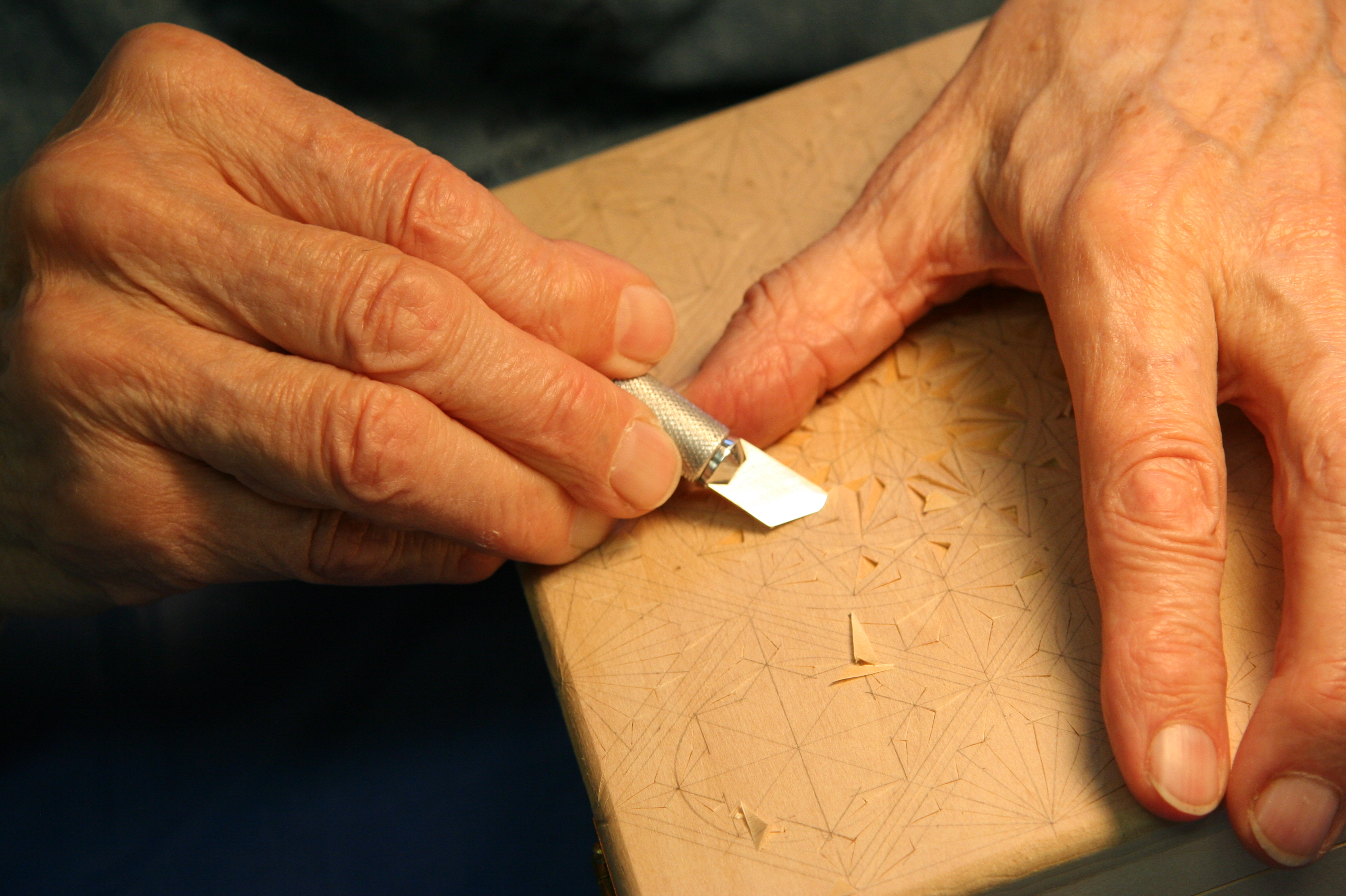Chip carving on:
[Wikipedia]
[Google]
[Amazon]
 Chip carving or chip-carving, ''kerbschnitt'' in German, is a style of carving in which
Chip carving or chip-carving, ''kerbschnitt'' in German, is a style of carving in which
knives
A knife ( : knives; from Old Norse 'knife, dirk') is a tool or weapon with a cutting edge or blade, usually attached to a handle or hilt. One of the earliest tools used by humanity, knives appeared at least 2.5 million years ago, as evidenced ...
or chisels are used to remove small chips of the material from a flat surface in a single piece. The style became important in Migration Period metalwork, mainly animal style jewellery, where the faceted surfaces created caught the light to give a glinting appearance. This was very probably a transfer to metalworking of a technique already used in woodcarving, but no wooden examples have survived. Famous Anglo-Saxon examples include the jewellery from Sutton Hoo and the Tassilo Chalice
The Tassilo Chalice (german: Tassilokelch; la, Calix Tassilonis) is a bronze chalice (cup), chalice, gilded with silver and gold, dating from the 8th century AD. The chalice is of Anglo-Saxon design, and has probably been at Kremsmünster Abbey, ...
, though the style originated in mainland Europe. In later British and Irish metalwork, the same style was imitated using casting
Casting is a manufacturing process in which a liquid material is usually poured into a mold, which contains a hollow cavity of the desired shape, and then allowed to solidify. The solidified part is also known as a ''casting'', which is ejected ...
, which is often called imitation chip-carving, or sometimes just chip carving (authors are not always careful to distinguish the two), a term also sometimes applied to pottery
Pottery is the process and the products of forming vessels and other objects with clay and other ceramic materials, which are fired at high temperatures to give them a hard and durable form. Major types include earthenware, stoneware and ...
decorated in a similar way.
Woodwork
In modernwood carving
Wood carving is a form of woodworking by means of a cutting tool (knife) in one hand or a chisel by two hands or with one hand on a chisel and one hand on a mallet, resulting in a wooden figure or figurine, or in the sculptural ornamentation ...
, the style is also called spoon carving. The style is traditional in the folk art
Folk art covers all forms of visual art made in the context of folk culture. Definitions vary, but generally the objects have practical utility of some kind, rather than being exclusively decorative. The makers of folk art are typically tr ...
of many countries. Patterns can be free form style or based on geometric figures. In America it is mostly used with basswood, butternut, pine
A pine is any conifer tree or shrub in the genus ''Pinus'' () of the family Pinaceae. ''Pinus'' is the sole genus in the subfamily Pinoideae. The World Flora Online created by the Royal Botanic Gardens, Kew and Missouri Botanical Garden accepts ...
, or mahogany. Chip carving knives can also be used for whittling
Whittling may refer either to the art of carving shapes out of raw wood using a knife or a time-occupying, non-artistic (contrast wood carving for artistic process) process of repeatedly shaving slivers from a piece of wood. It is used by many as ...
, cabinet making
A cabinet is a case or cupboard with shelves and/or drawers for storing or displaying items. Some cabinets are stand alone while others are built in to a wall or are attached to it like a medicine cabinet. Cabinets are typically made of wood (so ...
, and general workbench
A workbench is a sturdy table at which manual work is done. They range from simple flat surfaces to very complex designs that may be considered tools in themselves. Workbenches vary in size from tiny jewellers benches to the huge benches used by ...
purposes.
External links
* {{Authority control Carving Woodcarving Jewellery making